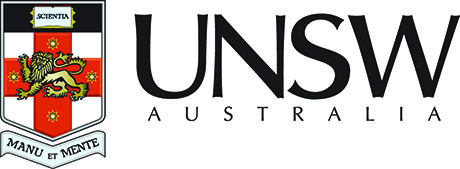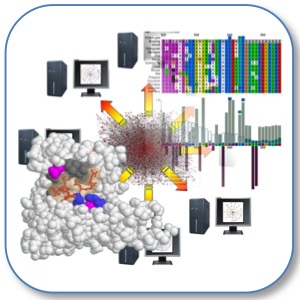

|
SLiMSuite REST Server |
| Links |
|---|
| REST Home |
| EdwardsLab Homepage |
| EdwardsLab Blog |
| SLiMSuite Blog |
| SLiMSuite |
| Webservers |
| Genomes |
| REST Pages |
| REST Status |
| REST Help |
| REST Tools |
| REST Alias Data |
| REST API |
| REST News |
| REST Sitemap |
PeptCluster V1.5.4
Peptide Clustering Module
 |
|
Copyright © 2012 Richard J. Edwards - See source code for GNU License Notice
Imported modules:
rje
rje_aaprop
rje_obj
rje_pam
rje_slim
rje_tree
rje_zen
rje_dismatrix_V2
See SLiMSuite Blog for further documentation. See rje for general commands.
Function
This program is for simple sequence-based clustering of short (aligned) peptide sequences. First, a pairwise distance matrix is generated from the peptides. This distance matrix is then used to generate a tree using a distance method such as Neighbour-Joining or UPGMA.
Default distances are amino acid property differences loaded from an amino acid property matrix file.
Version 1.5.0 incorporates a new peptide alignment mode to deal with unaligned peptides. This is controlled by the
peptalign=T/F/X option, which is set to True by default. If given a regular expression, this will be used to guide
the alignment. Otherwise, the longest peptides will be used as a guide and the minimum number of gaps added to
shorter peptides. Pairwise peptide distance measures are used to assess different variants, starting with amino acid
properties, then simple sequence identity (if ties) and finally PAM distances. One of the latter can be set as
the priority using peptdis=X. Peptide alignment assumes that peptides have termini (^ & $) or flanking wildcards
added. If not, set termini=F.
Commandline
INPUT OPTIONS
peptides=LIST : These can be entered as a list or file. Lines following '#' or '>' ignored [peptides.txt]
aaprop=FILE : File of amino acid properties [aaprop.txt]
aadis=FILE : Alternative amino acid distance matrix [None]
peptalign=T/F/X : Align peptides. Will use as guide regular expression, else T/True for regex-free alignment. []
termini=T/F : Whether peptides for alignment have termini (^ & $) or X flanking regex match [True]
maxgapvar=X : Maximum number of consecutive gaps to allow for peptide alignment without Regex guide [3]
maxgapx=X : Maximum total number of gaps to allow for peptide alignment without Regex guide [5]
CLUSTER OPTIONS
peptdis=X : Method for generating pairwise peptide distances (id/prop/pam) [prop]
peptcluster=X : Clustering mode (upgma/wpgma/neighbor) [upgma]
OUTPUT OPTIONS
savedis=FILE : Output distance matrix to file [peptides.*]
outmatrix=X : Type for output matrix - tdt / csv / mysql / phylip / png [tdt]
savetree=FILE : Save generated tree as FILE [peptides.peptdis.peptcluster.*]
treeformats=LIST: List of output formats for generated trees (nsf/nwk/text/r/png/bud/qspec/cairo/te/svg/html) [nwk,text]
See also rje.py generic commandline options.
History Module Version History
# 0.0 - Initial Compilation.
# 1.0 - Initial working version.
# 1.1 - Modified output a little.
# 1.2 - CGI Output tuple.
# 1.3 - PAM clustering and WPGMA.
# 1.4 - Bug fixes for end of sequence characters and different length peptides.
# 1.5.0 - Added peptalign=T/F/X function for aligning peptides using regex or minimal gap addition. Added REST.
# 1.5.1 - Updated REST output. Removed peptide redundancy.
# 1.5.2 - Improved clarity of warning message.
# 1.5.3 - Added catching of splitPattern() error during alignment.
# 1.5.4 - Fixed error message error.
PeptCluster REST Output formats
Run with&rest=help for general options. Run with &rest=full to get full server output as text or &rest=formatfor more user-friendly formatted output. Individual outputs can be identified/parsed using
&rest=OUTFMT for:peptides = original input peptidesaligned = aligned peptidesmatrix = peptide distance matrixX = peptide tree(s), where X is nsf/nwk/text/png/svg (treeformats=LIST: only nwk & text made by default.)© 2015 RJ Edwards. Contact: richard.edwards@unsw.edu.au.